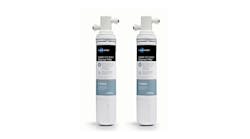I and many of my colleagues are long term readers and supporters of Contractor and have long found your publication to be an excellent, well-informed representation of the mechanical contracting and PVF business. Your reporting and representation of materials and technologies has always been fair, fact-based and unbiased.
That is why I was dismayed to read in the article, Utah home employs myriad of energy saving technologies, in the March 2011 issue, the following statement, "The Andolseks were also excited to incorporate a more environmentally friendly piping option into their project. The polypropylene material used in Aquatherm requires less energy for initial production, and involves none of the environmental effects associated with mining operations."
While the Andolseks, to whom this is attributed may believe this, I would have expected that a publication on the caliber of Contractor would clearly recognize this as nothing more than green washing, at the expense of other materials such as copper. To my knowledge, there has been no accurate, comparable environmental life cycle inventory or analysis published comparing the environmental impacts of polypropylene pipe versus metallic or other competitive piping materials/systems, therefore no valid data to support these claims.
Had validation for such claims been researched, one would find that there is, in fact, no way to substantiate such claims, and that the claims themselves neglect some very key points considered in the evaluation of sustainability. For example, while the claims clearly point to potential environmental impacts of mining, they fail to recognize that the base raw material of polypropylene manufacture is oil, extraction of which has some notable, recent and long-reaching negative environmental impacts. Secondly, while the claims discuss energy of primary production, they fail to mention the fact that unlike copper and many other piping materials that are manufactured and supplied locally in the U.S., the only source of manufacture for the polypropylene piping product of mention is Germany, thus, requiring extensive fuel/energy burden just to deliver the material to the market. Third, the claims neglect the importance of recycling and recycled content in evaluating the environmental friendliness of the material/system. While polypropylene materials can be recycled, their use/quality would be downgraded, so a polypropylene pipe would have to be recycled as a polar fleece jacket, for example. With this downgrade in use, and the lack of an established scrap of recycling process and use stream, and the fact that polypropylene pipe is made using 100% virgin materials, the piping system itself carries the full burden of the environmental impact.
Copper on the other hand is 100% recyclable for use at the same quality/purity as its original use, so a copper tube can be infinitely recycled and used as a copper tube without expensive and energy intensive material reclamation processes. In fact, of the copper found in tube manufactured in North America over the past 10 years, nearly 50% of the copper content came from post-consumer recycled scrap. Also, the U.S. and world has a well-established copper reclamation and recycling stream that ensures that the initial environmental impacts of copper processing are amortized over the life of thousands of year worth of use.
In today's marketplace where contractors, engineers, building owners and developers look at your publication for valuable information to aid in their selection of products and systems, especially in an important, data-driven and confusing area such as environmental sustainability, I can't overlook how important it is to not allow your readers to be mislead by unsubstantiated claims of environmental superiority.
Best regards,
Andrew G. Kireta Jr.
Vice President, Market Development
Copper Development Association Inc.
Editor's Note: The following citation, regarding an environmental analysis of drinking water installation systems, is from Aquatherm.
The Technical University, Berlin, conducted a study, Comparative Ecological Analysis of Drinking Water Installation Systems, comparing different drinking water pipe installation systems. This analysis accounted for the numerous aspects of the pipe systems from a life cycle analysis viewpoint. Included in the study of vulcanized polyethylene (PEX), polybutylene (PB), chlorinated polyvinylchloride, (PVC-C) , copper (Cu), galvanized steel, and polypropylene (PP), were the raw materials used to make the pipe, pipe/fitting production, system components, insulation and installation of the materials.
Results of the study conclude that, in the case of metal pipe systems, there are high amounts of ground pollution loads, resulting from the relatively high quantity of electric energy consumed in their production. Results also conclude that the metal systems, even considering the recycling quotas, require high energy levels for the production of their base material.
The study states, "Due to their lower densities, plastic systems are considered significantly lighter in weight. The steel system ranks at the top of the list of system weights. In the case of plastic systems there exists, within this group, considerable environmental differences."
The study concludes that, "On the whole polypropylene and polybutylene present the most environmentally beneficial alternatives compared to metallic pipe systems."

